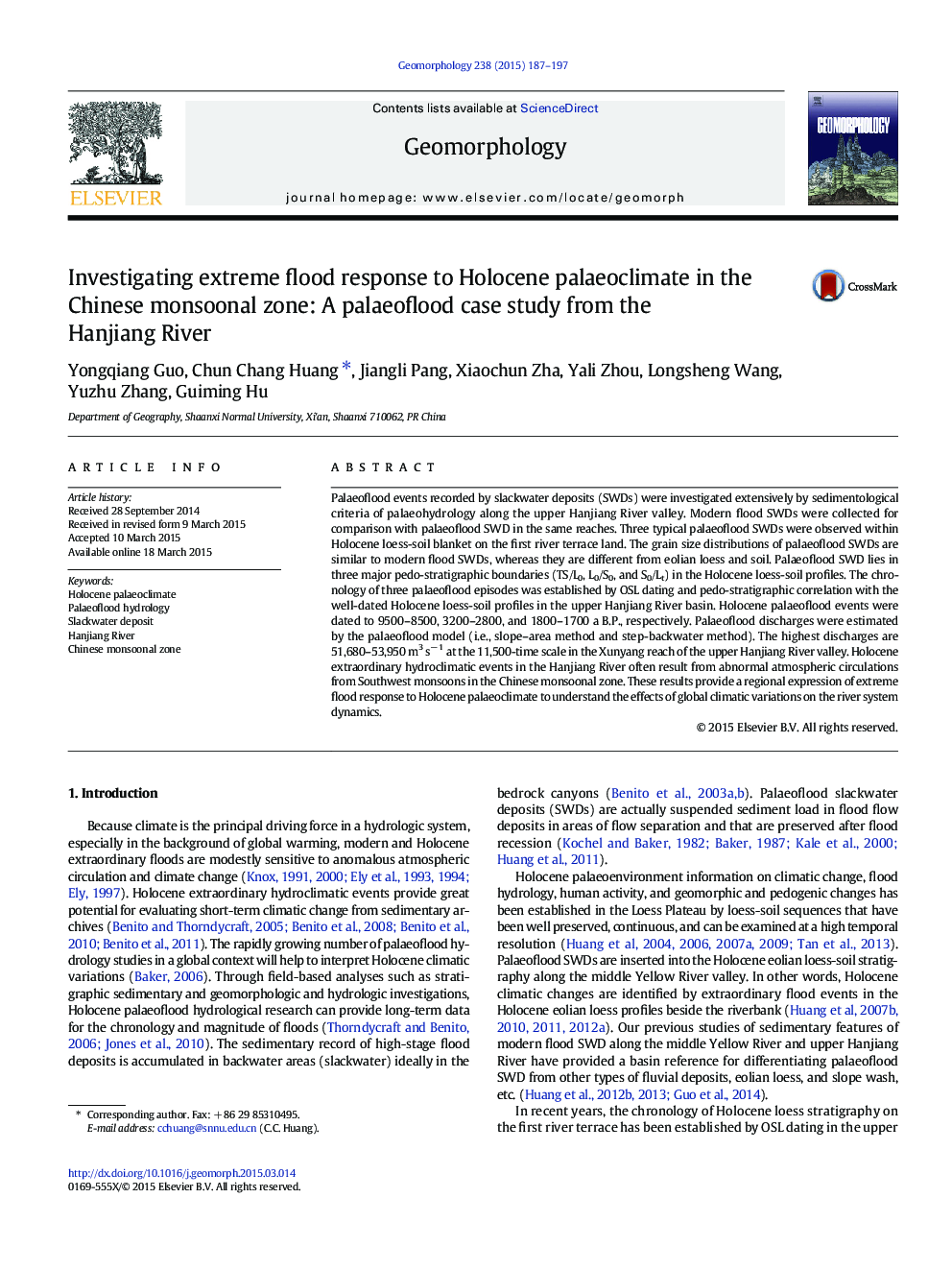| کد مقاله | کد نشریه | سال انتشار | مقاله انگلیسی | نسخه تمام متن |
|---|---|---|---|---|
| 4684310 | 1635411 | 2015 | 11 صفحه PDF | دانلود رایگان |

• Extreme flood event response to Holocene palaeoclimate in the Chinese monsoonal zone
• Palaeoflood slackwater deposits were found inserted into Holocene eolian loess profiles.
• Palaeoflood events were dated to 9500–8500, 3200–2800, and 1800–1700 a B.P., respectively.
• Improvement of flood frequency–peak discharge relationship curve was established.
• The highest palaeoflood peak discharges were estimated to be 51,680–53,950 m3 s− 1.
Palaeoflood events recorded by slackwater deposits (SWDs) were investigated extensively by sedimentological criteria of palaeohydrology along the upper Hanjiang River valley. Modern flood SWDs were collected for comparison with palaeoflood SWD in the same reaches. Three typical palaeoflood SWDs were observed within Holocene loess-soil blanket on the first river terrace land. The grain size distributions of palaeoflood SWDs are similar to modern flood SWDs, whereas they are different from eolian loess and soil. Palaeoflood SWD lies in three major pedo-stratigraphic boundaries (TS/L0, L0/S0, and S0/Lt) in the Holocene loess-soil profiles. The chronology of three palaeoflood episodes was established by OSL dating and pedo-stratigraphic correlation with the well-dated Holocene loess-soil profiles in the upper Hanjiang River basin. Holocene palaeoflood events were dated to 9500–8500, 3200–2800, and 1800–1700 a B.P., respectively. Palaeoflood discharges were estimated by the palaeoflood model (i.e., slope–area method and step-backwater method). The highest discharges are 51,680–53,950 m3 s− 1 at the 11,500-time scale in the Xunyang reach of the upper Hanjiang River valley. Holocene extraordinary hydroclimatic events in the Hanjiang River often result from abnormal atmospheric circulations from Southwest monsoons in the Chinese monsoonal zone. These results provide a regional expression of extreme flood response to Holocene palaeoclimate to understand the effects of global climatic variations on the river system dynamics.
Journal: Geomorphology - Volume 238, 1 June 2015, Pages 187–197